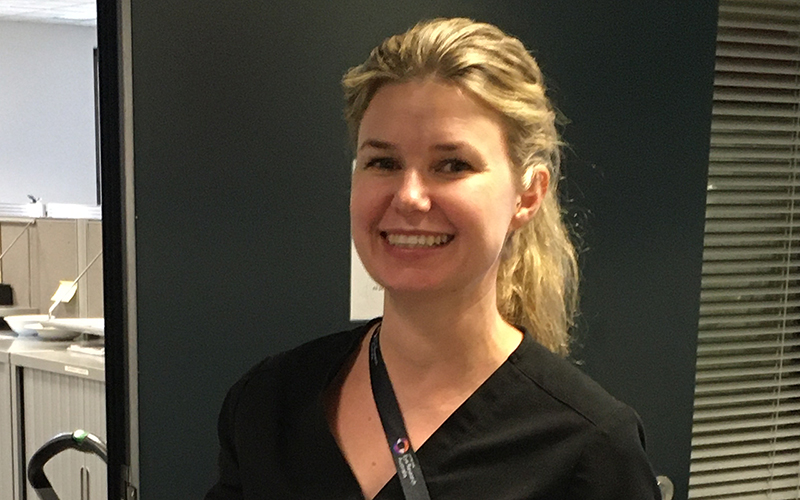This website uses cookies so that we can provide you with the best user experience possible. Cookie information is stored in your browser and performs functions such as recognising you when you return to our website and helping our team to understand which sections of the website you find most interesting and useful.
Stories
Nurses saving sight and advancing research
On International Nurses Day, we celebrate our Lions Eye Donation Service coordinators out in the field and in the lab – working to protect sight for current and future generations.
The Lions Eye Donation Service (LEDS) has been working around the clock for over 30 years to coordinate thousands of eye donations, with nurses playing a vital role.
At the heart of LEDS is a small team of donor coordinators who travel across Victoria to discuss eye donation and complete consent with donor families, perform the eye tissue recovery and bring the precious gift back to LEDS to prepare for potentially sight-saving surgeries and, increasingly, surgeon training and vision research.
Transplant coordinator and registered nurse Gavin de Loree says it’s incredible working at an eye bank that is part of a research organisation.
“We’re not only helping to restore sight but also uncover the background behind eye diseases.”
Saving sight
Gavin’s passion for helping others first inspired him to become a nurse.
“My mother is also a nurse, and she used to introduce me to some of her favourite patients,” he says.
Gavin had a well-rounded nursing career before coming to LEDS – working in neurosurgery, intensive care and the emergency department at the Austin Hospital.
His time in critical care led to a donor coordinator role at DonateLife. Gavin worked closely with families to gain their consent for organ donation – often alongside the LEDS donor coordinators.
“An opportunity came up for a role at LEDS, and here I am seven years later,” he says.
Gavin says his nursing background has been valuable for work as a donor coordinator, with a natural affinity for communicating with families during a difficult time.
“It’s about having the empathy to pick up on subtle cues and knowing when to give families some time.”
When a person chooses to donate their eyes after they pass away, their tissue can be used to help others through transplant surgeries or medical research.
“One donor can help up to 10 people, with corneas used to restore sight through corneal transplant surgeries and sclera for eye reconstruction or glaucoma surgeries,” says Gavin.

Advancing research
Families can also consider donating tissue to research aiming to better understand the eye and find new ways to treat diseases such as glaucoma, corneal diseases, inherited retinal diseases and diabetic eye disease.
LEDS’ research donation is managed through the CERA Biobank, which now has its first dedicated research donor coordinator, with registered nurse Jenna Vartiainen joining in early 2024.
“We’re increasing the tissue that goes to research,” she says.
Jenna was inspired to become a nurse to make a difference in people’s lives – working as a critical care nurse in her native Finland and in Melbourne for the last four years.
“I wanted to become a research nurse, so I enrolled into a Master of Clinical Research at the University of Melbourne,” she says.
Jenna’s course mentor was none other than ophthalmic nurse and Head of LEDS Dr Heather Machin.
“When it was time to do my thesis, Heather introduced me to eye banking and biobanking,” she says.
After graduating, Jenna had two months on-the-job training with the LEDS coordinators before going out on her own.
When Jenna retrieves donor eye tissue, she delivers it directly to researchers at CERA and other institutes around Victoria.
“Scientists researching the retina need the tissue immediately, whereas corneal tissue used for research can be stored for up to 30 days,” she says.
Jenna is also supporting projects such as the work led by Professor Mark Daniell and the BIENCO Consortium.
“They’re using donated tissue for their work to develop a bioengineered cornea and their Hygelix project developing a gel to assist surgeons in corneal transplant surgeries,” says Jenna.
Jenna says her time as a nurse was invaluable preparation for her eye banking and biobanking career.
“It’s been quite rewarding giving donor families the opportunity to contribute to research and just making sure they are taken care of.”
Why become an eye donor?
If you’d like to find out more about giving someone the gift of sight or helping with medical research, there are a few important things you should know about eye donation.

